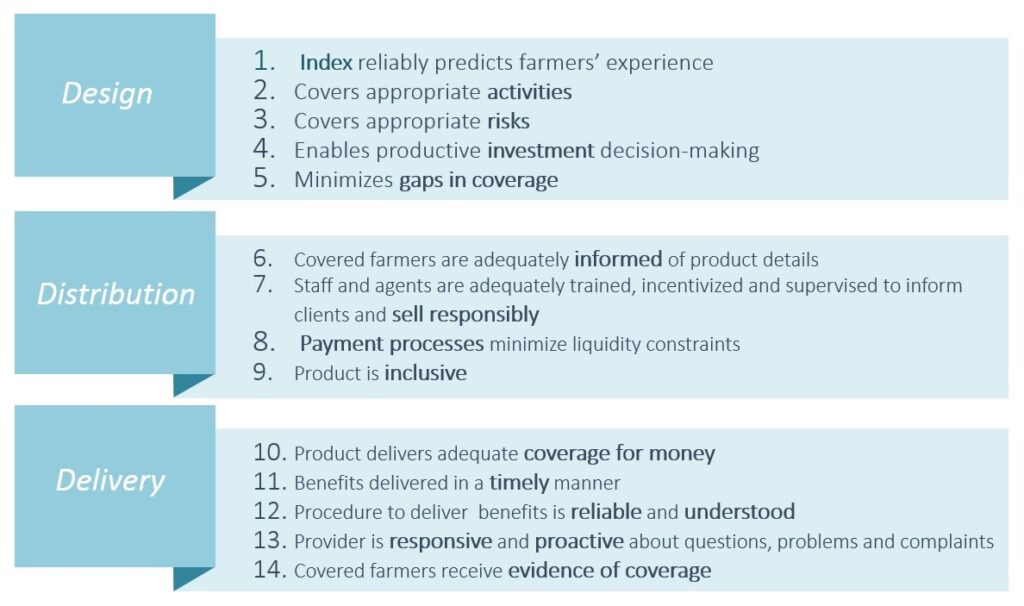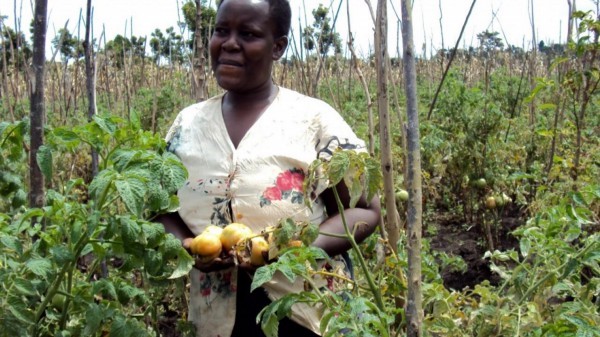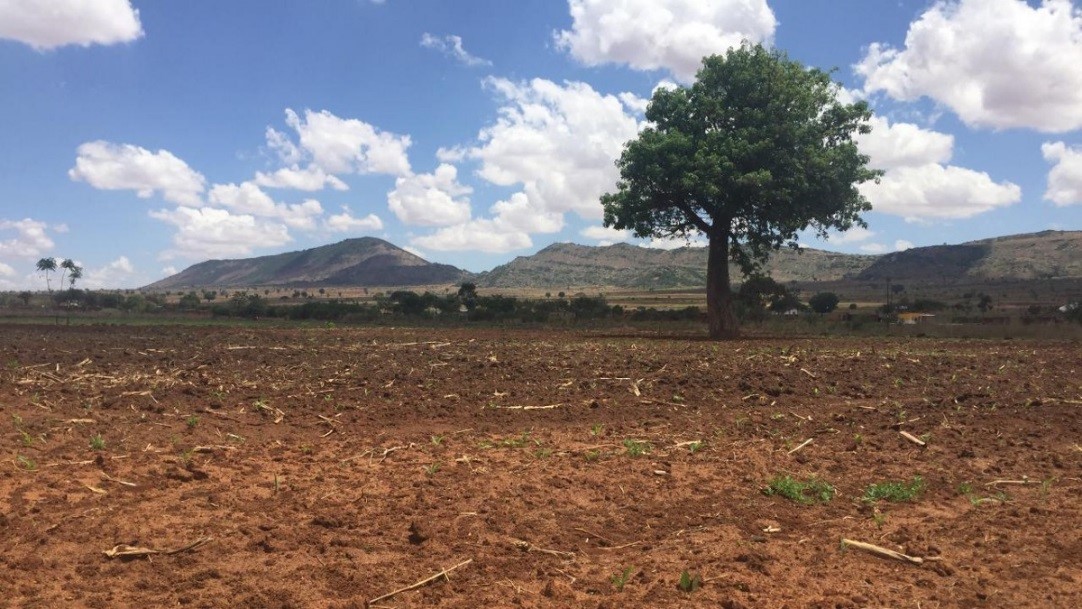The ILO’s Impact Insurance Facility, the Feed the Future Innovation Lab for Assets and Market Access (AMA Innovation Lab) at UC Davis have developed a new tool to assess the value of agricultural index insurance products for farmers- the 3-D Client Value Assessment Tool. The 3-D approach, encompassing Design, Distribution and Delivery, takes a holistic view of value, going beyond pure product features. The 14 indicators consider the broader product value proposition, the context in which the product is offered, and the quality of the processes implemented to deliver the product to smallholder farmers. Each translates an important element of client value into a measurable indicator, for which a product is scored as either poor, average or strong.

The 14 indicators of the 3-D Client Value Assessment Tool
This multi-dimensional tool merges the Facility’s PACE Analysis, adapted for index-based agricultural insurance, with the AMA Innovation Lab’s calculations for Minimum Quality Standards (MQS) for index insurance. It was created as part of an iterative process with stakeholders from all perspectives and was piloted and refined to ensure efficacy and applicability.

The tool has been tested with five schemes in Peru, Ethiopia, Kenya, Senegal and Zambia. In these pilots, we observed particular variation in the scores given for indicator four. This indicator assesses the maximum benefit amount in relation to farmers’ investment costs. Essentially, it captures whether the benefit received is sufficient to help farmers respond and recover after a risk event occurs.
As the issue of quality of the contract and its ability to pay when required the most is of paramount importance, Minimum Quality Standards (MQS) measure forms the foundation of this 3-D assessment, and it is the first of 14 indicators of index insurance quality and what quality implies.

This problem of contract quality is not theoretical. The increasing investments in agricultural index insurance have often been more focused on expanding access than assuring product safety and improving quality and value to farmers. There have been a number of high-profile contract failures that clearly demonstrated the risks associated with poorly designed products. These failures sow distrust for an otherwise promising solution, sabotaging the impacts that are possible with high-quality contracts.
Beyond establishing minimum quality, a MQS analysis can also establish whether an index insurance contract is a cost-effective means to support farmers’ wellbeing. From the perspective of donors or governments, index insurance should have a better dollar-for-dollar potential to provide stability than an equivalent direct cash transfer.
The 3-D tool, technical guide for its use and all related material can be accessed at http://www.impactinsurance.org/tools/3-d-client-value-assessment
Written by Pranav Prashad (ILO’s Impact Insurance Facility)
